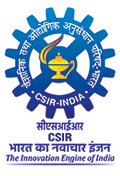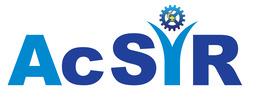High temperature deformation behaviour of various nickel base superalloys used for manufacturing aero engine components
Objectives
These projects aim at studying high temperature deformation beahviour of nickel-base superalloys used for manufacturing blades/discs/liners of aero engines. LCF, creep-fatigue interaction, mean stress and hot corrosion effect on LCF, microstructure evolution during LCF/CF/creep exploitation are studied for nickel base superalloys CM 247 LC DS/EA, IN 718, Udimet 720.
Technical Details
- Microstructural characterization of the as-received cast and forged alloys
- Study of tensile deformation behaviour
- Study of cyclic deformation behaviour in terms of hardening/softening curves
- Strain -life relationship at different temperatures
- Creep characterization of as-received alloys
- Effect of hold duration on fatigue life of at different temperatures.
- Creep-fatigue damage diagrams
- Detailed microstructural studies (SEM/TEM) during LCF/CF/creep exploitations
Achievement (Output/outcome)
The experimental data generated in these projects are being used by the aero engine designers. The research/scientific output are sometime published in refereed international journals.
Following papers can be referred to:
R.K. Rai, J. K. Sahu, Strength-ductility paradox in a directionally solidified nickel base superalloy, Materials Letters 220 (2018) 90-93.
R.K. Rai, J.K. Sahu, P.S. M. Jena, S.K. Das, N. Paulose, D. Chandru Fernando, Micromechanism of high temperature tensile deformation behaviour of a directionally solidified nickel base superalloy, Journal of Materials Engineering and Performance 27 (2018) 659-665.
Sahu, Mechanism of serrated flow in a cast nickel base superalloy, Materials Letters 210 (2018) 298-300.
R.K. Rai, J.K. Sahu, P.S. M. Jena, S.K. Das, N. Paulose, C. Fernando, High temperature tensile deformation of a directionally solidified nickel base superalloy: Role of micro constituents, Materials Science and Engineering: A 705 (2017) 189-195.
A. Banerjee, J.K. Sahu, Neeta Paulose, Chandru D Fernando, R.N. Ghosh, Micromechanism of cyclic plastic deformation of alloy IN 718 at 600oC, Fatigue & Fracture of Engineering Materials & Structures 39 (2016) 877-885.
J. K. Sahu, B. Ravi Kumar, S.K. Das, N. Paulose, S.L. Mannan, Isothermal high temperature low cycle fatigue behavior of Nimonic-263: Influence of type I and type II hot corrosion, Material Science and Engineering: A 622 (2015) 131-138
J.K. Sahu, R.K. Gupta, J. Swaminathan, N. Paulose, S.L. Mannan, Influence of hot corrosion on low cycle fatigue behavior of nickel base superalloy SU 263, International Journal of Fatigue 51 (2013) 68-73.
S. Bagui, A.K. Ray, J.K. Sahu, N. Parida, J. Swaminathan, M. Tamilselvi, S.L. Mannan, Influence of Saline Environment on Creep Rupture life of Nimonic-263 for marine turbine application, Material Science and Engineering: A 566 (2013) 54-60.
Impact
CM 247 LC DS/EA, Nimonic 263, IN718, Udimet 720 etc. are candidate alloys for manufacturing blades/liners/discs and are critical engine materials. It is important to generate the strain range-life relationships (LCF properties) for these alloys. However, the operating load patterns on these components are best represented by hold-time fatigue testing which are known as creep-fatigue interaction tests. The ultimate failure of these discs results from creep-fatigue interaction. Therefore, it is imperative for the designers to have the creep-fatigue interaction behavior of these alloys used for gas turbine engine components thoroughly assessed.






